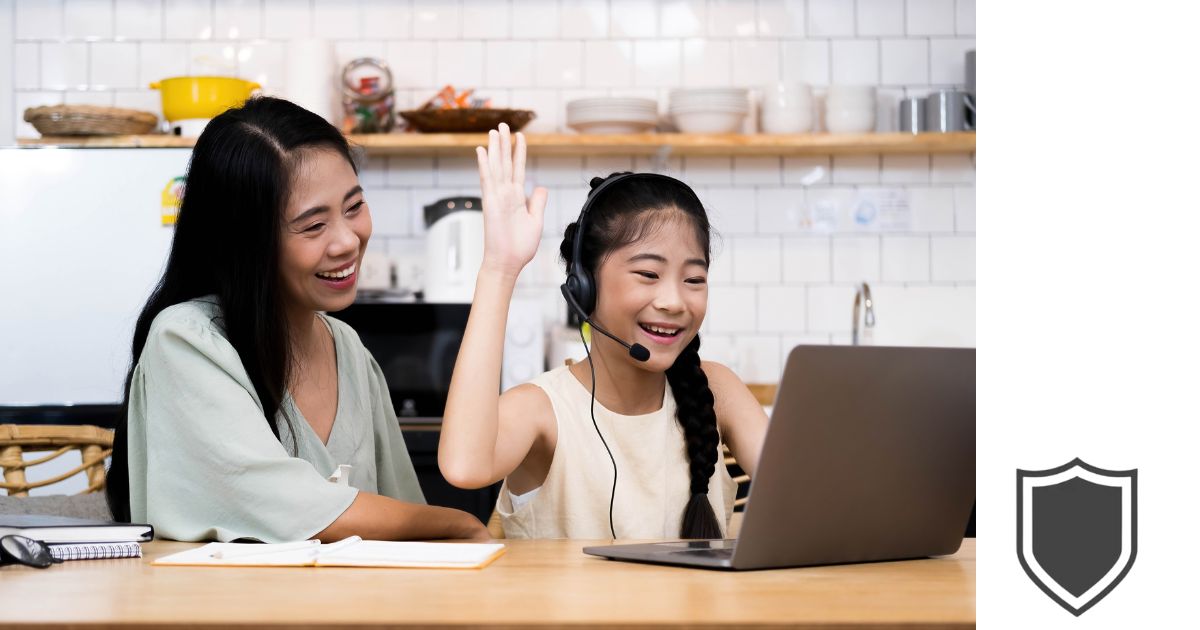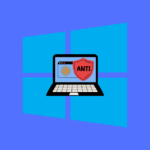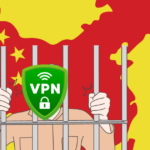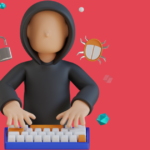Hello, tech-savvy families! I’m Dr. Edward Baldwin, and today, we’re diving into an incredibly important topic: Protecting our young ones as they navigate the vast universe of the internet.
In this digital age, kids are growing up with the world at their fingertips – quite literally. But with great power comes great responsibility, especially when it comes to navigating the online world safely.
“Young Surfers’ Guide: How to Stay Safe Online for Kids” is your go-to resource, packed with easy-to-follow tips and strategies to help your little ones enjoy the wonders of the web without getting caught in the undercurrent.
Whether it’s social media, online gaming, or just browsing, let’s ensure our kids are equipped with the right tools to surf the net safely. Ready to dive in? Let’s go!
Table of Contents
Understanding Online Risks for Kids

When guiding kids on internet use, I always emphasize that it’s a wonderful resource for learning and playing, but it comes with certain risks. One of the primary concerns is privacy. I teach them that personal information, like their name, address, and school, should stay private.
Another risk is online predators, who might use social media or gaming platforms to connect with kids. It’s essential for me to explain to kids how to interact safely online and recognize the signs of suspicious behavior.
Here’s a table summarizing major online risks for kids:
| Risk Category | Description | Precautionary Measures |
|---|---|---|
| Privacy | Risk of personal information being shared. | Never share personal information. |
| Online Predators | Interaction with potential malicious actors. | Be cautious about online friends. |
| Cyberbullying | Exposure to harassment or bullying. | Report and block the bully. |
| Inappropriate Content | Finding violent or adult content. | Use parental controls. |
| Scams | Deceptive practices to cheat or defraud. | Double-check offers and links. |
I also focus on cyberbullying, making sure kids know it’s not their fault if they’re targeted and that they should talk to a trusted adult right away.
Lastly, there’s always a risk of stumbling upon inappropriate content or getting tangled in scams. Age-appropriate filters and knowing not to click on suspicious links can go a long way to mitigate this.
I believe that education is key. The more kids understand these risks, the better they can navigate the online world safely.
Establishing Basic Safety Rules

In educating kids about online safety, I emphasize actionable, clear rules that they can follow to protect themselves online. Let’s walk through the fundamental safety pillars.
Creating Strong Passwords
My first lesson is always about passwords. I teach kids that a strong password is like a secret code that only they know. It should be long, with a mix of letters, numbers, and symbols. For example:
- Good:
SoccerGame123! - Better:
F@v0riteS0cc3rG@m3!
Using a password manager can help to keep these complex passwords organized without the need to memorize them all.
Recognizing and Reporting Suspicious Activity
I advise children to stay alert for anything that seems out of place or makes them feel uncomfortable. Suspicious activity may include:
- Messages from strangers asking for personal information
- Offers that seem too good to be true
- Requests for password or account details
I encourage them to report these encounters to a trusted adult immediately.
Being Cautious with Personal Information
I tell kids it’s important to keep personal details private – that includes their full name, home address, school name, or phone number. When in an online environment, oversharing personal information can lead to identity theft or other digital threats.
Using Secure and Kid-Friendly Websites
Finally, I make sure they understand the importance of navigating to secure websites, which often have a padlock symbol in the address bar. It’s also important they use websites that are appropriate for their age. I show them how to check for:
- Padlock icon – Indicates a secure connection
- URL – Should start with
httpsrather than justhttp
Exploring Parental Control Tools

Parental control tools are essential for helping me manage and protect my children’s online activities. These tools give me the peace of mind that they are exploring the digital world safely.
Using Filtering Software
I can set up filtering software to block my children from accessing inappropriate content. This software works by categorizing websites and restricting access to those that may contain explicit material or are not suitable for their age.
- Examples of Filtering Software:
- Net Nanny
- K9 Web Protection
Setting Up Browser Security Features
Most web browsers offer built-in security features which I make sure to activate. These can prevent my children from stumbling upon harmful content.
- Browser Security Tools:
- Google SafeSearch
- Microsoft Edge’s Content Restrictions
Monitoring Apps and Screen Time
By using monitoring apps, I can keep an eye on the online behavior of my kids. I can even set time limits on how long they can use certain apps or the device itself.
- Screen Time Management:
- iOS Screen Time
- Android Digital Wellbeing
Choosing Safe Online Games and Apps
When it comes to games and apps, I ensure they are age-appropriate and come from reputable sources. I often read reviews and check ratings before allowing my kids to download them.
- Safety Tips:
- Look for ESRB or PEGI ratings for games.
- Review app permissions before installation.
Educating Kids on Cyberbullying

Teaching kids about cyberbullying is essential. I’ll take you through the steps to identify, respond to, and prevent it.
Identifying Cyberbullying
Cyberbullying can be tricky to spot because it happens behind screens. I tell kids to look for signs like mean messages, rumors shared online, or edited images meant to mock someone. If it’s hurtful, repetitive, and targets a specific individual, it’s cyberbullying.
Responding to Cyberbullying
In the unfortunate event that a kid is cyberbullied, I suggest staying calm and not retaliating. Kids should save the evidence, and report it to a trusted adult. If it’s happening on a platform, use the report function to flag the inappropriate behavior.
Preventing Cyberbullying
Preventing cyberbullying begins with understanding online etiquette. I advise kids never to share passwords and think before posting. It’s like a golden rule online: Treat others as you want to be treated. And remember, once something is online, it might stay there forever.
Promoting Safe Online Communication

In guiding children through the world of online interaction, I focus on ensuring they understand how to communicate safely on social media, follow proper internet etiquette, and navigate chat rooms with caution. Here’s how I approach this vital aspect of their digital lives.
Guiding Social Media Interaction
When I teach kids about social media use, I emphasize the importance of keeping personal information private. It’s crucial to understand which details are safe to share and which should be kept confidential.
Personal information such as your home address, phone number, or school should never be posted publicly. I encourage them to adjust their privacy settings to control who sees their posts and to only accept friend requests from people they know in real life.
Practicing Netiquette
Netiquette, or internet etiquette, is a set of rules for behaving respectfully online. I remind kids to:
- Be kind: Treat others as you want to be treated.
- Think before posting: Once something is shared online, it’s hard to take it back.
- Avoid sharing content that could hurt someone’s feelings or harm their reputation.
Understanding Chat Room Safety
Chat rooms can be tricky, and I educate kids about the potential risks involved. I advise them to:
- Use only moderated chat rooms designed for kids.
- Never share personal details, even if someone claims to be a friend.
- Report any uncomfortable or threatening messages to a trusted adult immediately.
Engaging in Digital Literacy and Education

In navigating the online world, I believe it’s crucial for children to understand the essence of digital literacy, from maintaining privacy to discerning trustworthy information.
Learning About Online Privacy
As I teach young minds about online safety, I emphasize the importance of keeping personal information private. It’s vital for kids to understand that sharing details like phone numbers, addresses, or school information can lead to security risks.
- Do: Remind kids to adjust privacy settings on social media.
- Don’t: Allow them to share personal photos without parental consent.
Spotting Fake News and Scams
I guide children to spot unreliable sources and online scams by presenting examples in a format they understand. It’s important that they recognize signs of misinformation:
- Check the source: Verify if the story comes from a reputable outlet.
- Look for evidence: Trustworthy news has supporting facts and references.
Developing Critical Thinking Online
I encourage children to question what they read online rather than accept it at face value. By fostering an inquisitive mindset, they learn to:
- Think before they click on a link or download an attachment.
- Ask adults when uncertain about the legitimacy of online content.
The Last Word
And there we have it – a complete tour through the digital landscape tailored for our younger generation. In ‘Young Surfers’ Guide: How to Stay Safe Online for Kids,’ we’ve navigated through essential tips and strategies to safeguard our children in the ever-evolving online world.
Remember, educating our kids about internet safety is an ongoing conversation, not just a one-time lecture. It’s about empowering them with knowledge, encouraging responsible browsing, and being there to guide them along the way.
So, keep the lines of communication open, stay involved, and watch as your little surfers ride the digital waves with confidence and care. Here’s to a safer online experience for our kids – where they can learn, explore, and grow in a protected digital environment.
Keep surfing safely!
How to Stay Safe Online for Kids FAQs

In this section, I’ve gathered some of the most common queries about internet safety for kids and provided concise, actionable advice.
What are the top strategies for ensuring children’s safety on the internet?
I ensure my children’s safety online by actively discussing the risks, setting up parental controls, and maintaining an open dialogue about the content they access.
What should teenagers know about protecting themselves online?
I teach my teenagers to secure their personal data, be wary of sharing sensitive information, and recognize the signs of cyberbullying and phishing attempts.
Can you list five essential tips for online safety that every child should follow?
Certainly, I instruct my kids to: 1) Keep personal information private, 2) Only interact with known friends, 3) Avoid clicking on suspicious links, 4) Use strong, unique passwords, and 5) Tell me about any uncomfortable online encounters.
What measures can students take to enhance their internet security?
I advise students to update their privacy settings on social platforms, utilize antivirus software, and be cautious when downloading files or accessing new websites.
How can parents educate their children about internet safety effectively?
My approach to educating my children includes being a good role model of safe online habits and utilizing age-appropriate resources to teach them about online safety.
What steps can I take to safeguard my 9-year-old’s online activities?
For my 9-year-old, I make use of child-friendly search engines, monitor their screen time and app use, and encourage them to talk about their online experiences.
- Amazon Email Phishing: How to Identify and Avoid Scams - May 11, 2025
- Malwarebytes vs McAfee: Decoding the Ultimate Antivirus Battle - May 11, 2025
- Best Antivirus for Windows 10: Expert Recommendations for 2023 - May 11, 2025









